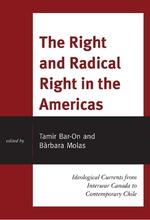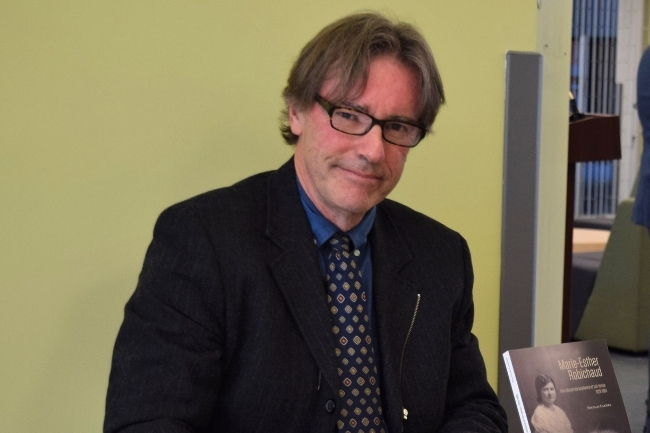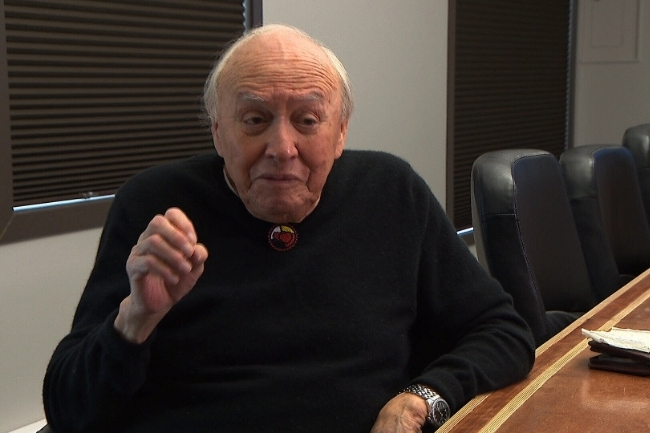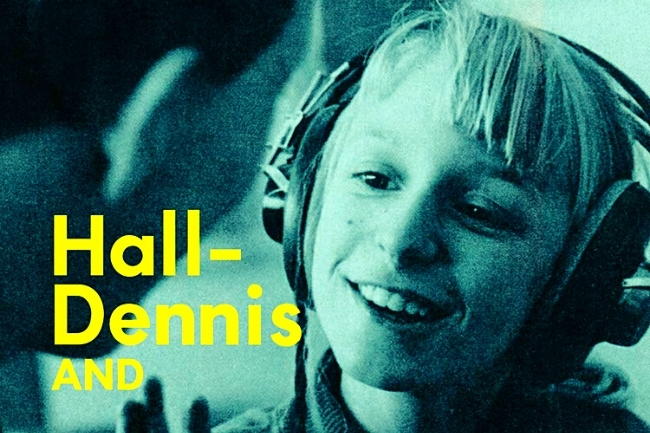Posts com a Tag ‘América – Canadá’
The Right and Radical Right in the Americas – Ideological Currents from Interwar Canada to Contemporary Chile | Tamir Bar-On e Bàrbara Molas
Casa Branca (Washington, DC/EUA). Ilustração de “The Gay Takeover of American Conservatism” | Cronicles (2022)
Em The right eand radical right in the Americas: currents from interwar Canada to contemporary Chile [A Direita e a Direita radical nas Américas: correntes ideológicas no entreguerras do Canadá ao Chile contemporâneo], Tamir Bar-On e Bàrbara Molas querem cobrir a lacuna deixada pelo recente The Oxford Handbook of the Radical Righ, editado por Jens Rydgren, que não inclui países da América Latina – diga-se de passagem, uma prática contumaz de imperialistas e ex-imperialistas, mesmo que o Handbook não tenha anunciado objetivos e perspectivas comparatistas. Entre as metas do livro, anunciado como, provavelmente, um pioneiro no tema (dentro dos marcos espaciais e temporais referidos), estão o exame das “tradições ideológicas de Direita”, a avaliação do impacto da “Direita” e da “Direita radical” na política latino-americana, o impacto das ideias nacionalistas e dos pensadores europeus e estadunidenses nessa tradição e a declaração de que a esquerda aprende muito quando estuda as distintas “tendências ideológicas” concorrentes.
 Na introdução, o mexicano T. Bar-On e a canadense B. Molas, experimentados pesquisadores das direitas radicais, tentam atribuir unidade à coletânea que organizaram a partir do emprego da expressão “tradição ideológica” [right-wing ideological traditions] (são 13 tradições) e da significação minimalista de “direita” como todos os “teóricos, movimentos, partidos políticos e regimes que veem a desigualdade humana como ‘natural’ ou ‘normal’, seja no âmbito socioeconômico, seja baseado em diferenças raciais, culturais ou de gênero” (p.6). Em breve comentário sobre as tipificações de direita – incluindo Cas Mudde, Roger Eatwell, Pierre Ignazi Vedran Obucina e Jens Rydgren –, os organizadores concluem que as “forças políticas, movimentos e partidos” examinados podem ser designados, sem grandes problemas, por “direita”, “direita radical populista”, “direita nacionalista populista”, “direita radical”, “direita alternativa” ou “extrema direita” (p.6). Os pontos de interlocução entre os nove capítulos, contudo, são estabelecidos também pelos objetos que tangenciam ou encarnam tais tradições: catolicismo, corporativismo, multiculturalismo e etnonacionalismo. Leia Mais
Na introdução, o mexicano T. Bar-On e a canadense B. Molas, experimentados pesquisadores das direitas radicais, tentam atribuir unidade à coletânea que organizaram a partir do emprego da expressão “tradição ideológica” [right-wing ideological traditions] (são 13 tradições) e da significação minimalista de “direita” como todos os “teóricos, movimentos, partidos políticos e regimes que veem a desigualdade humana como ‘natural’ ou ‘normal’, seja no âmbito socioeconômico, seja baseado em diferenças raciais, culturais ou de gênero” (p.6). Em breve comentário sobre as tipificações de direita – incluindo Cas Mudde, Roger Eatwell, Pierre Ignazi Vedran Obucina e Jens Rydgren –, os organizadores concluem que as “forças políticas, movimentos e partidos” examinados podem ser designados, sem grandes problemas, por “direita”, “direita radical populista”, “direita nacionalista populista”, “direita radical”, “direita alternativa” ou “extrema direita” (p.6). Os pontos de interlocução entre os nove capítulos, contudo, são estabelecidos também pelos objetos que tangenciam ou encarnam tais tradições: catolicismo, corporativismo, multiculturalismo e etnonacionalismo. Leia Mais
Toward the Health of a Nation: The Institute of Health Policy, Management and Evaluation — The First Seventy Years | Leslie A. Boehm
Leslie A. Boehm | Imagem: University of Toronto
This book is a lengthy institutional history of the Institute of Health Policy, Management and Evaluation (IHPME) at the University of Toronto, published by the Institute itself. The Institute and its various precursors were the most important public health education programs in Canada for most of the twentieth century, providing essential training for individuals who would shape public health at the local, provincial, and federal levels. The genealogy of the IHPME goes back to the founding of the School of Hygiene at the University of Toronto in 1924, with Dr. J. G.
FitzGerald as its director. Funded by the Rockefeller Foundation, the School would establish an international reputation under FitzGerald’s leadership. The rapid expansion of hospitals after the Second World War drove demand for a new class of managers. The Department of Hospital Administration, nestled within the School of Hygiene, welcomed its first class in September 1947. Not surprisingly, graduates of the hospital administration program found employment in hospitals and in government. After 1967, the focus shifted from “hospital” to “health” administration as the school refined its programs, while concurrently solidifying its position as an important training centre for a cadre of administrators who would become influential throughout English-speaking Canada. Leia Mais
Marie-Esther Robichaud. Une éducatrice acadienne et son temps/ 1929– 1964 | Nicolas Landry
NIcolas Landry | Imagem: Acadie Nouvelle
Parmi les richesses des archives du campus de l’Université de Moncton, campus de Shippagan, on retrouve un fonds très intéressant sur l’état du système scolaire francophone dans le monde acadien au Nouveau-Brunswick au milieu du siècle dernier, c’est-à-dire de 1929 à 1964 environ. En effet, ces documents, surtout des lettres et des rapports, recèlent des informations importantes sur la formation du corps enseignant au primaire et au secondaire. De plus, les documents témoignent de l’évolution du système scolaire, des heurs et des malheurs des maîtres tant dans les petites écoles que dans les écoles secondaires et les collèges. Ces précieux documents sont signés par Marie-Esther Robichaud, enseignante, puis directrice d’école et ultimement, assistante du surintendant des écoles dans le comté de Gloucester dans le nord-est du Nouveau-Brunswick. L’historien, Nicolas Landry, a exploré ce fonds d’archives. Il nous en livre une solide description.
Landry témoigne tout autant des grands progrès qu’il a fallu accomplir pour amener une certaine uniformité à la fois dans le contenu des matières enseignées et dans la formation du personnel enseignant que des succès qui viendront couronner les efforts de Marie-Esther Robichaud et des nombreux problèmes auxquels elle aura su apporter des solutions. Ces informations nous sont présentées en sept chapitres. Leia Mais
Genèse et legs des controverses liées aux programmes d’histoire du Québec (1961–2013) | Olivier Lemieux
Detalhe de capa de Genèse et legs des controverses liées aux programmes d’histoire du Québec (1961–2013)
S’engager à narrer le récit de l’enseignement de l’histoire au Québec est un défi de taille, considérant les conflits et les controverses que le sujet soulève. Lemieux s’y est intéressé dès son parcours doctoral et le présent livre en est un des résultats. La parenté entre ce livre et la thèse de Lemieux est frappante dans le meilleur des sens : la plume de l’auteur est assurée, le texte est limpide, les éléments sont bien sélectionnés, expliqués et résumés. Le texte est organisé autour d’une question clé : pourquoi l’enseignement de l’histoire nationale, tel qu’il est présenté dans les programmes officiels québécois, est-il au centre de controverses? Avec une telle question, on peut comprendre que Lemieux, dans son développement, doit s’attarder aux grands débats, aux enjeux de société et aux controverses ayant agité le Québec autour de ce sujet sensible.
Nous devons commencer par souligner la présence d’une préface élogieuse de Claude Corbo qui donne le ton au livre. Ce dernier est organisé autour de cinq chapitres, un premier expliquant la démarche menée par Lemieux pour retracer le fil conducteur permettant de répondre à sa question de recherche et les quatre suivants organisant les différents éléments constitutifs du récit qu’il brossera de l’enseignement de l’histoire. Leia Mais
Intimate Integration: A History of the Sixties Scoop and the Colonization of Indigenous Kinship | Allyson Stevenson
Allyson Stevenson | Imagem: Eagle feather News
Social workers, like teachers, played a significant if unintentional role in the colonization of First Nations and Métis peoples in Canada by engaging in approaches to providing services where “assimilation took the guise of benign and de-racialized technologies of helping” (109). Métis scholar and historian Allyson Stevenson reveals this truth in her detailed and critical account of Sixties Scoop when there was a sudden escalation in the apprehension and transracial adoption of Indigenous children.
While Stevenson, an adoptee herself, focuses her account on Métis experiences in Saskatchewan, she provides an examination of broader historical contexts and regional, national, and even international policies and laws that sustained the “colonial intrusion into the intimate realm of Indigenous families” (4). Leia Mais
Reunion, Remembrance, and Reclamation at an Urban Indian Residential School | Survivors of the Assiniboia Indian Residential School e Andrew Woolford
Theodore Fontaine, a survivor of the Assiniboia Indian Residential School and one of the authors of “Did you see us? Reunion, Remembrance and Reclamation at an Urban Indian Residential School.” | Imagem: CTV News
Did You See Us? asks readers to participate in a reunion amongst a sociologist, the Winnipeg community, and Survivors of the Assiniboia Indian Residential School. Operating between 1958 and 1973, this residential institution was different than the previous fifteen that existed in Manitoba, as it was both the first residential high school in the province and the first within an urban setting (Winnipeg). Administered by the Oblates of Mary Immaculate, the school existed as a place to offer high school education for students from remote communities. In this way, the school presented itself to be a typical urban high school, but the varied student perspectives acknowledged, “it was still a residential school” (16).
By the time survivors arrived at Assiniboia, they had experienced multiple residential schools under the direction of various religious denominations. Therefore, some students, including the late Theodore Fontaine, thought of the school as “a little oasis in a sea of turbulent seas” due to the higher quality of food and caring teachers who pushed them to do well both in academics and extracurriculars (29). The school day was still structured around prayers, a strict segregation of genders, and isolation from their home communities. However, in comparison to their former Indian day, residential, or public schooling experiences that happened before or after Assiniboia, the urban high school was remembered more fondly for many students. These recollections were in part due to the friendships that were made, additional extracurricular activities including dances, sports, community events, and the opportunity for many students to explore an urban area for the first time.
The physical book was created in conjunction with Survivors from The Assiniboia Residential School Legacy Group and Dr. Andrew Woolford, an experienced sociologist on this topic. As a settler scholar, Woolford’s name does not appear on the cover of the book and only appears after the Survivors’ stories in part 3. This act of centring the community’s history as an author demonstrates Woolford’s commitment to answering the title of the book, Did You See Us? We are forced to confront this story from the perspective of residential school survivors rather than an academic. Woolford’s chapter is followed by four additional parts, which recount stories from former staff, neighbours, the general Winnipeg community, and three separate reunions (2013, 2015, 2017).
Together, these distinct parts combine Indigenous community research, oral history, and archival analysis into an informative account of this understudied institution. The purpose of the book is to help survivors in “reclaiming our former school and its legacy” for healing and commemoration (xxiii). This was a twofold goal which included the creation of new spaces to share stories about the school while survivors were still alive, and at the same time educating the broader Winnipeg community about its legacy. In this manner, the story becomes a collection of multiple perspectives that reads more circular than linear. This works particularly well due to the incompleteness of the archival record and the varied experiences students remembered that was largely dependent on their previous schooling and in what decade they attended.
In the mid 1970s, when the school was being demolished, only a few students’ embroidery work was saved along with the 1958–59 class photograph. The book fills in those missing details when the physical building was reconstructed to fit the needs of a new RCMP forensic lab. Did You See Us? also included the perceptions of white students around the school, nearby neighbours, former staff, and the local Winnipeg community members who were actively engaged in the reunion. Woolford balances the varied perspectives of those both inside and outside the institution with the reality of the genocidal policies during this period. Did You See Us?, then, is not just a book, but a physical archive constructed through a particular context which included physical reunions, the sharing of historical posters, and the production of a peer-reviewed text. The book is larger than its physical presence as it represents a relational memory that was led by the local Indigenous community and translated into an academic text.
The book does present a historical conundrum when conducting research at a school reunion. As one survivor, Betty Ross, noted, “the residential school either made you or broke you” (9). As a result, we hear a lot from the students who were “made” in the school and nothing from the students who either passed away before the reunion or did not want to relive those memories with classmates (9). Woolford is blunt about these missing pieces: “They are an incomplete set of remembrances” in the sense that only some stories could have been possibly shared in 2017 (199).
However, these “incomplete” memories are better than no memories, and the book itself represents the most complete information. It also presents several troubling questions about the reality of educational integration efforts for Indigenous people in this period and the ongoing experience of Indigenous students who still attend high school far from their home communities.3 In a circular way, the former school building now houses the Canadian Centre for Child Protection, ensuring the memory and legacy of its former occupants are remembered. I would highly recommend this book for new settler scholars in Indigenous studies. Woolford is honest about his inexperience hosting survivor reunions and his reluctance to engage in work that only benefits academics rather than the Indigenous communities in their area. Woolford employs an “unsettling methodology” which supported the Assiniboia Survivors Legacy Group to own, control, access, and possess their histories, and is an excellent template for future Indigenous community-led research in education (198). The book will serve as an important archive of the Assiniboia Indian Residential School and represents an urban community’s reckoning with its colonial past.
Resenhista.
Jackson Pind – Queen’s University.
Referências desta resenha
Survivors of the Assiniboia Indian Residential School; WOOLFORD, Andrew (eds.). Did You See Us? Reunion, Remembrance, and Reclamation at an Urban Indian Residential School. Winnipeg: University of Manitoba Press, 2021. 272p. Resenha de: PIND, Jackson. Historical Studies in Education / Revue d’histoire De l’éducation. Vancouver, v.34, n.1, 2022. Acessar publicação original.
Hall-Dennis and The Road to Utopia: Education and Modernity in Ontario | Josh Cole
Detalhe de capa de Hall-Dennis and The Road to Utopia: Education and Modernity in Ontario
When you open Josh Cole’s book Hall-Dennis and The Road to Utopia you find a series of photos of children and teachers happily working in open concept classrooms, engaging with new postwar technology (TVs, headphones, tape machines), and running freely in fields. These photos are part of the 1968 Ontario education document Living and Learning: The Report of the Provincial Committee on Aims and Objectives of Education, also known as the Hall-Dennis Report. The images, along with the written report, suggest a new purpose for education, at the forefront of modernity, progress, and creativity. Cole argues these images were used to indicate schools were no longer “a place of confinement but instead a place of enjoyment,” now depicted as modern art galleries, highlighting “clean lines, bright lights and a modernistic sensibility” (185). However, Cole also suggests that the images, and much of the narrative in the report, were a veneer of openness and did not represent the real substance of the report, which was to maintain conservative libertarian positions on individualism and citizenship. Leia Mais
Colour Matters: Essays on the Experiences/ Education/ and Pursuits of Black Youth | Carl E. James
Carl E. James | Imagem: Tweeter
Dr. Carl E. James (FRSC) is currently the Jean Augustine Chair in Education, Community and Diaspora in the Faculty of Education at York University. Over the past three decades, his scholarship has focused on the intersections of race, ethnicity, culture, language, and identity in the Canadian context. Dr. James’ essay collection entitled Colour Matters: Essays on the Experiences, Education, and Pursuits of Black Youth is a culmination of his research about Black Canadian youth.
A key feature of this collection is that James structures the chapters with a “Call and Response” style, a linguistic form originating in sub-Saharan Africa. James describes this as a conversation that is meant to provoke larger critical dialogues. Each chapter begins with a “Call” that is, an essay drawn on primary and secondary research conducted by James over the past two decades. The second part of the chapter is a “Response” from one of ten internationally recognized scholars from the United Kingdom, Canada, and the United States. This structure allows the reader to integrate new perspectives about each topic. Leia Mais
Boom Kids: Growing Up in the Calgary Suburbs/ 1950–1970 | James A. Onusco
Detalhe de capa de Boom Kids: Growing Up in the Calgary Suburbs/ 1950–1970
Since their conception, scholars have treated suburbs as a sociological petri dish, a delineated space in which to examine an evolving landscape and the social dynamics within its borders. Almost every field of history has a stake in the suburban narra-tive, producing diverse work interrogating gender and sexuality, evolutions in tran-sit, housing, and consumerism, the politics of city planning and local governance, impacts on health and the environment, and the intertwined notions of conformity, gatekeepers, and outsiders. The history of childhood has often travelled to the sub-urbs. This is most apparent in studies of North America’s postwar suburbs, when parents were increasingly outnumbered by their baby boom offspring and a child-hood focused on academics, safety, and character building was championed. James Onusko’s Boom Kids: Growing Up in the Calgary Suburbs, 1950–1970 contributes to this discourse by shifting the oft dominant central Canada-focus of both childhood and suburban history to the prairies. Onusko recounts the history of Calgary’s Banff Trail suburb from the vantage point of its youngest residents to demonstrate “both consciously and unconsciously [how] children and adolescents influenced suburbia, just as it shaped them” (2). Leia Mais
El ABC de una paz olvidada. Tiempo de mediación en Canadá/1914
A diez años de la publicación en inglés de The Forgoten Peace. Mediation in Niagara Falls, 1914, del embajador Michael Small aplaudimos el lanzamiento de su versión en español. Los editores de Huitzils para su tiraje en castellano acertadamente recuperan en el título el acrónimo del ABC, (Argentina, Brasil y Chile) y juegan con el estribillo usado en el mundo editorial para señalar un texto que introduce a un tema. Considero que el trabajo de Small cumple sobradamente el propósito de presentar una narración esclarecedora, al tiempo que encuentra un nuevo acercamiento a las conferencias de Niagara Falls.
Se trata de un libro que viene a contribuir a la historia diplomática de la Revolución Mexicana en uno de sus acontecimientos menos atendidos. Niagara Falls fue un pretendido espacio de diálogo, impulsado por Argentina, Brasil y Chile y avalado desde Washington, en un esfuerzo de mediar en el “conflicto internacional” entre México y Estados Unidos, que había desembocado en la ocupación del puerto de Veracruz por parte de la flota estadounidense la primavera de 1914. Leia Mais
Red Light City. Montreal/Amsterdã: The Architecture Observer | Tsaiher Cheng
Neste livro a arquiteta e urbanista taiwanesa Tsaiher Cheng (1) apresenta como discussão central a relação entre a prostituição – trabalho sexual – e o espaço urbano. Parte-se do entendimento que isto é uma via de mão dupla, ou seja, não apenas a indústria do sexo é afetada pelas políticas urbanas como também desempenha um papel importante para a forma urbana, a organização espacial e dinâmica das cidades. Dividido em oito capítulos, o livro dedica cinco deles à análise de cidades específicas: Hong Kong, Taipei, Montreal, Antuérpia e Amsterdã e cada uma delas é analisada por um estudioso local. Assim, apesar de Tsaiher Cheng ser a principal autora do livro, a publicação conta ainda com os textos de Jung-Che Chang, Magdalena Sabat, Maarten Loopmans e Manuel Aalbers e Hans Ibelings, autor do prefácio. Ainda, Cheng também apresenta uma análise da tipologia dos bordéis do red light district de Amsterdã e sintetiza os modelos de organização da indústria do sexo nas cidades.
No primeiro capítulo, “An intense struggle in urban renew processes”, Cheng explica que os red light districts são áreas voltadas ao sexo, cujas atividades costumam ser conhecidas para além de seus limites. Contudo, cada zona é diferente, pois sua organização depende de vários aspectos, entre eles a morfologia urbana, a localização e o enquadramento legal do trabalho sexual. Com relação a este último aspecto, a autora esclarece que há quatro tipos de sistemas de regulação do trabalho sexual: a) quando o trabalho sexual é legal e regulado; b) quando o trabalho sexual é legal, mas estabelecimentos como bordéis são ilegais; c) quando o trabalho sexual é ilegal, mas o/a trabalhador/a sexual não é considerado criminoso/a; d) quando o trabalho sexual é ilegal. Leia Mais










